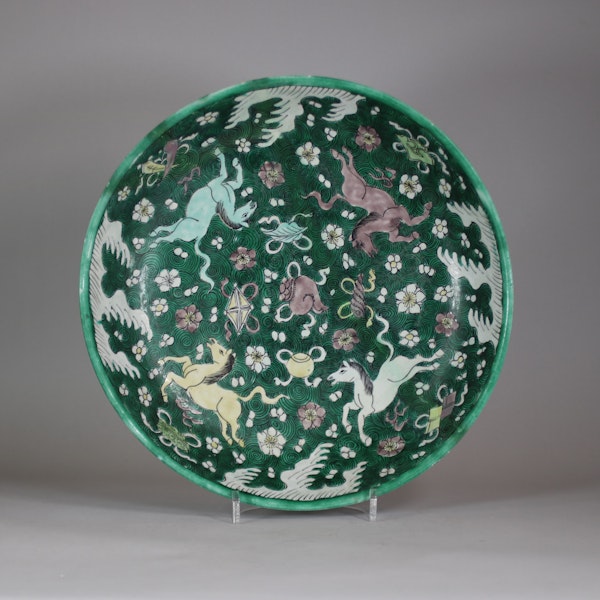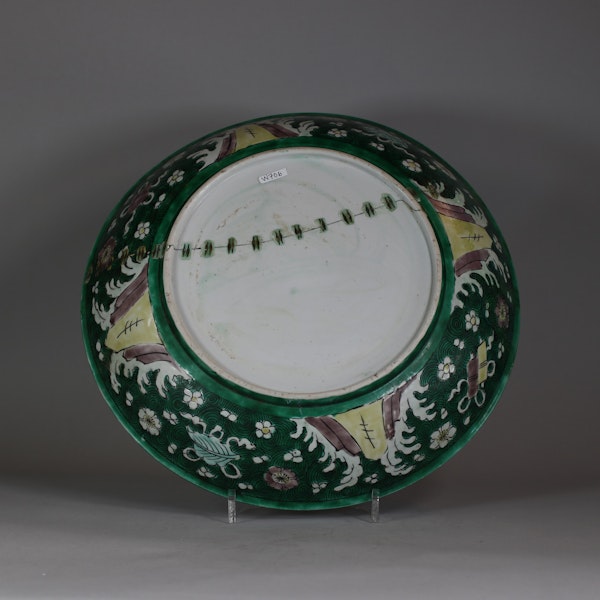Chinese rare biscuit famille verte dish, mid-17th century, early Kangxi (1662-1722)
Chinese rare biscuit famille verte dish, mid-17th century, early Kangxi (1662-1722)
POA
Description
Chinese rare biscuit famille verte dish, mid-17th century, early Kangxi (1662-1722), painted in polychrome enamels on the biscuit in the famille verte palette with four galloping horses amongst billowing waves with high white crests, the tightly scrolling green ground scattered with plum blossom, petals, flames and precious beribboned babao; the reverse with further babao, flowerheads and four rocky outcrops with waves breaking over their sides, all against a scrolling green ground.
Dimensions:
Diameter: 33 cm. (13in.)
Condition: In half and restored with rivets, see image
Notes:
There is a similar dish in the Sir Michael Butler collection which is illustrated in Butler, Medley & Little, ‘Seventeenth Century Chinese Porcelain in the Butler Family Collection’ (1990) p.180, pl.124. Another similar example can be found in the collection of the Brooklyn Museum (79.267.1) and a smaller dish of this type decorated with one galloping horse is on display at the Guimet Museum in Paris (cat. no. 146).
The horses on this dish refer to the horses of King Mu of Zhou, who according to the historical romance Mu Tianzhi Zhuan, was transported to the realm of immortal paradise by a charioteer called Zaofu. His horses each had a special power: one could gallop so fast that its hooves didn't touch the ground, while another could run especially fast under the cover of darkness. The horses thus became a popular motif connected with imperial journeys, and with the quest to attain immortality, which was a particular concern of the Daoist tradition popular at the time. The beribboned babao on this dish are auspicious Buddhist emblems and include books (learning), an artemisia leaf (disease prevention), double horns (happiness), open lozenge (triumph) and the wish-granting pearl.
| item details | |
|---|---|
| Material and Technique | Porcelain with biscuit enamel decoration |
| Origin | Chinese |
| Period | 17th Century |
| Condition | Other |
| Diameter | 33cm. (13in.) |
Product REF: W706






